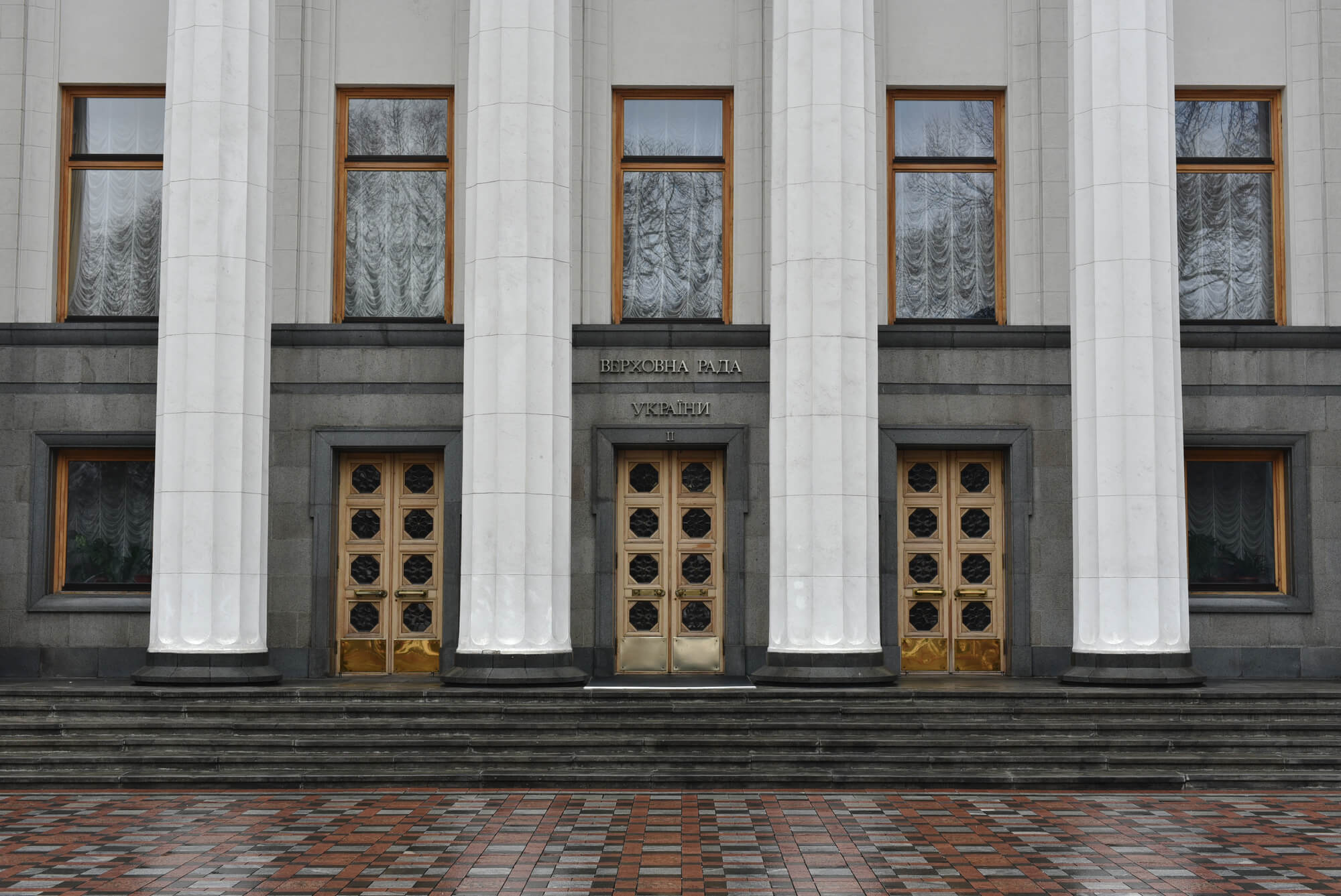The Government’s public administration reform strategy ends in 2021. It is clear, however, that this key reform, on which the quality of other changes depends, still requires staff, leadership and strategic communications. The Institute for Constructive Journalism and New Media conducted in-depth interviews with experts who have developed and implemented reform in recent years. In this article, we present their conclusions about what panned out, what did not, and what still needs to be done to have a quality civil service in Ukraine.
Why do we need public administration reform?
Ukraine’s public administration reform (PAR) is referred to as “reform of reforms” since the success of all other reforms, a reboot of the system of governance, a change in thinking and, ultimately, the state’s accomplishing its goals of improving the lives of citizens depends on the quality of public policy-making and its effective implementation.
Public administration reform is designed to build an effective public machine that will improve the quality of decision-making and public services. Successful reform will help solve many social and economic problems and achieve a higher standard of living. In turn, this will help increase the level of trust in the state.
Reform began in 2016. Its key feature was to be the division of powers and areas of responsibility between politicians and civil servants. Such a division was to ensure the sustainability of the policy and reduce the damage done by the populists in power. The government recently announced an update of reform strategy through 2021. There are ongoing public consultations. However, both the government and society pay little attention to reform. Therefore, those who continue working on reform lack political weight and consistency in implementing the necessary changes.
We analyzed the experience of the experts who, in different ways and at different times, were involved with developing and implementing public administration reform as representatives of the public, its direct participants and even as politicians responsible for it (see the Appendix for details). The experts identified three main components of reform’s success: political leadership, attracting quality staff and communication. Below are the study’s detailed results.
Public administration is not just the civil service
All the interviewed experts agreed that public administration reform is a priority for Ukraine, as it is the basis for all further changes, a reboot of the governance system, directly influencing the change in thinking of civil servants and politicians.
However, at the same time, a third of experts noted the problem of a narrow perception of reform in Ukraine. Public administration reform is not just civil service reform.
“Governance reform has never even been seen as a necessity in Ukrainian society. Usually, it is narrowed down to civil service reform because it is necessary to change hiring and firing procedures, increase salaries. It is actually a much broader topic. But unfortunately, it is not the subject of public attention and discussion.“
According to experts, the essence of reform is “to build a service oriented state that solves the problems of citizens, not creates them.”
This requires:
- creating an efficient and independent civil service;
- forming balanced and well-calculated public policies;
- instituting modern procedures for making and implementing effective decisions;
- forming the image of the civil service as a competitive employer, attractive to motivated and competent professionals;
- creating high quality public services for citizens and businesses.
What panned out and what did not in implementing reform
Among the reform’s successful steps, the experts named increased transparency and openness due to competition for civil service positions, digitization of public services and the work of the centers for providing administrative services (CPAC).
“The most successful direction of reform is the provision of administrative services.”
There has been some success in creating the Ministries’ Directorates. The number of Directorates should correspond to policy areas, but the Government has yet not decided on a list of policy areas. Therefore, Directorates still exist only in the pilot Ministries. Thanks to the creation of Directorates, it became possible to separate political and administrative functions and attract new people to work at government agencies. As an example of successful implementation of Directorates, the experts most often mentioned the Ministry of Health under Ulana Suprun.
Another partial success is attracting specialists to work in the civil service through a new competition process. However, since March 2020, because of the abolition of competition due to quarantine restrictions, more than 22 thousand people have been temporarily appointed to civil service positions out of competition.
As for reform implementation, the experts consider strategic planning and the development of public policy unsuccessful (these processes failed to be implemented). Implementation of reform was significantly negatively affected by Parliament’s decision on the acceptability of the “political firing” of civil servants.
“It was a big step backward when it became possible to fire civil servants not by the procedure. When the new leadership comes, the top (“A” category) civil servants leave according to a simplified procedure.”
The following reform steps remain completely unimplemented:
- a total reboot of the system of public administration and fixing the results achieved;
- depoliticizing the civil service (currently, political and administrative functions are not separated);
- the HR function and internal communications at the Ministries;
- reviewing the functions and efficiency of work not only at the Ministries, but also at other central executive bodies;
- modern decision-making practices.
More than half of the experts believe that all the planned procedural and institutional changes have not been implemented, with many decisions being “rolled back”.
What has hindered reform, or the top 3 challenges for PAR
According to the experts, it is
- a lack of political leadership and demand for reform among politicians, civil servants, and civil society,
- staff shortages and
- reform communications (both external and internal).
Let us take a closer look at these three reasons.
Lack of political leadership
All the experts noted a lack of demand for reform from key domestic stakeholders and the absence of a political reform leader.
The experts attribute this to the fact that this reform is complex and long-term – it is not realistic to get reform results during one politician’s term. Besides, unpopular decisions need to be made, which is not politically advantageous to the Government. The Prime Minister, who is supposed to be the reform leader, needs communication support and society’s demand.
The absence of demand and political leadership brings other problems, such as a lack of political support, inconsistent implementation of reform, sabotaging reform due to an unwillingness to abandon manual control and established, comfortable practices and also superficiality – only technically “meeting” international commitments in lieu of making profound changes.
“If the Government cannot decide to pay civil servants appropriate salaries, it cannot impose certain work and qualification requirements on them.”
“Manual control is of interest to anyone interested in corruption opportunities.”
“In the beginning, it was fairly quick and tough reform, and then it was one accommodation, another one, then a third one. But reform must be done uncompromisingly.”
Staff shortages
There is a lack of sufficient professional staff with appropriate knowledge and experience, especially in management. The experts attribute this to the lack of high quality specialized education in Ukraine.
“There are no institutions training those who could work effectively in the civil service. They had to be imported from abroad or hired from the business sector. And this did not work, there is no point in taking up such a job, coming from the business sector.”
Communication challenge
The experts pointed to a lack of proper internal and external communications on reform. This, in particular, caused tensions between the “old” and “new” civil servants during the first stages of reform, increasing resistance to change.
A negative image of the civil service in the eyes of citizens also continues to take shape. Numerous surveys show a low level of trust in civil servants and the public administration system in general.
“Society does not realize what problem needs to be addressed with the help of public governance.”
How to make civil service reform top of the agenda again?
The unpopularity and complexity of reform makes it difficult to assume that any president or prime minister in Ukraine will take on the burden of political leadership of “reform of reforms” without a significant demand from civil society.
Yet demand for such a complex reform will not appear by itself. Because this reform is almost non-existent in the information space. In the minds of Ukrainians, its implementation is not linked to the state of affairs in the country. It is therefore necessary to construct a social problem around reform, linking in the citizens’ minds the effectiveness of governance and its results such as the state of economic development, the state’s ability to solve social problems and the Government’s ability to meet daily challenges.
According to the study, the three main reform challenges – political leadership, staff shortages and a lack of communication in the broadest sense – can be united under the umbrella of communications. Leadership problems and staff shortages cannot be solved without extensive, mass communications and internal communications within the civil service. Those experts who have worked on reform and understand its tasks and importance for Ukraine can help with mass communication, first of all, by ably explaining the importance of reform. At the same time, it is important to get involved a wide range of experts, opinion leaders, media and NGOs in discussing and publicizing reform.
Appendix: Research design
The purpose of our study was to assess the course of public administration reform and identify the key results, problems and their possible solutions from the point of view of the expert community. The data collection method was in-depth interviews. The study was conducted using our own resources and at the expense of the Institute for Constructive Journalism and New Media from October 20 to December 1, 2020. Respondents were selected among the experts directly or indirectly involved with reform or involved with its development or implementation during 2016-2019, who were not serving as MPs, Ministers, or civil servants at the Ministries at the time of the study.
According to a preliminary analysis, the sample of experts involved with the development and implementation of reform at various stages and having a more or less complete idea of its implementation details numbered up to a hundred people. For the sake of the study’s accuracy, we divided the sample of experts into the following groups: experts directly involved with reform, experts indirectly involved with reform, ex-politicians and politicians. It was decided to exclude the latter from the survey in order to eliminate the risk of non-transparency or political motives. The sample thus contained a proportional number of PAR experts, related experts and ex-politicians. The survey was conducted on the basis of non-disclosure of the cited experts but making known the fact of their participation in the study.
A total of 23 in-depth interviews were conducted with the following experts:
- Serhiy Soroka, RPR;
- Khrystyna Faychak, BRDO;
- Hlib Vyshlynskyi, NGO Center for Economic Strategy;
- Ihor Koliushko , CPLR, RPR PAR group chief expert;
- Pavlo Kovtoniuk, former deputy minister of health, KSE;
- Volodymyr Semenikhin, RPR, Office of Administrative Services;
- Mariia Repko, NGO Center for Economic Strategy;
- Oleksiy Dorohan, director at BRDO;
- Pavlo Kukhta, former deputy minister of economy, KSE;
- Roman Kobets, BRDO;
- Oleksiy Honcharuk, ex-prime minister;
- Oleksandr Sayenko, ex-minister of the Cabinet of Ministers;
- Olesia Ohryzko, RPR;
- Maryana Rybiy, RPR, PAR group manager;
- Ivan Khilobok, CMU Reforms Delivery Office;
- Dmytro Yarovyi, KSE;
- Yuriy Holynskyi, KSE, Center of Public Finance and Governance;
- Olexandr Starodubtsev, former head of the National Agency of Ukraine for Civil Service;
- Iryna Piontkivska, NGO Center for Economic Strategy;
- Artem Shaipov, PGA;
- Oleh Petrenko, former NHSU head;
- Kyrylo Klymenko, RPR;
- Vladyslav Rashkovan, alternate executive director for Ukraine at the International Monetary Fund
In the survey guide, the team used 34 key questions in five main areas of reform: public administration reform in general, policy-making and strategic planning, the civil service, public services and accountability.
Attention
The author doesn`t work for, consult to, own shares in or receive funding from any company or organization that would benefit from this article, and have no relevant affiliations



